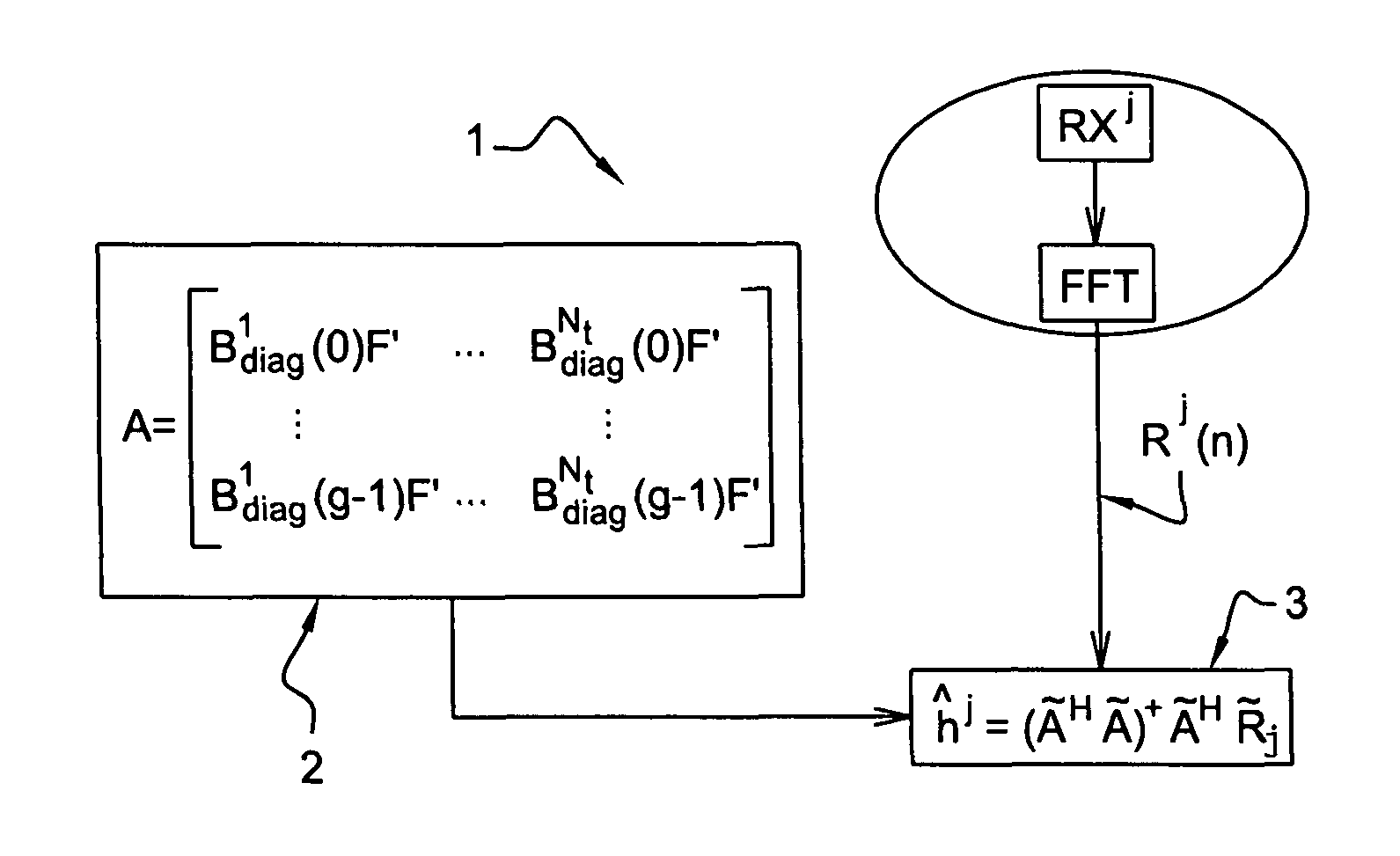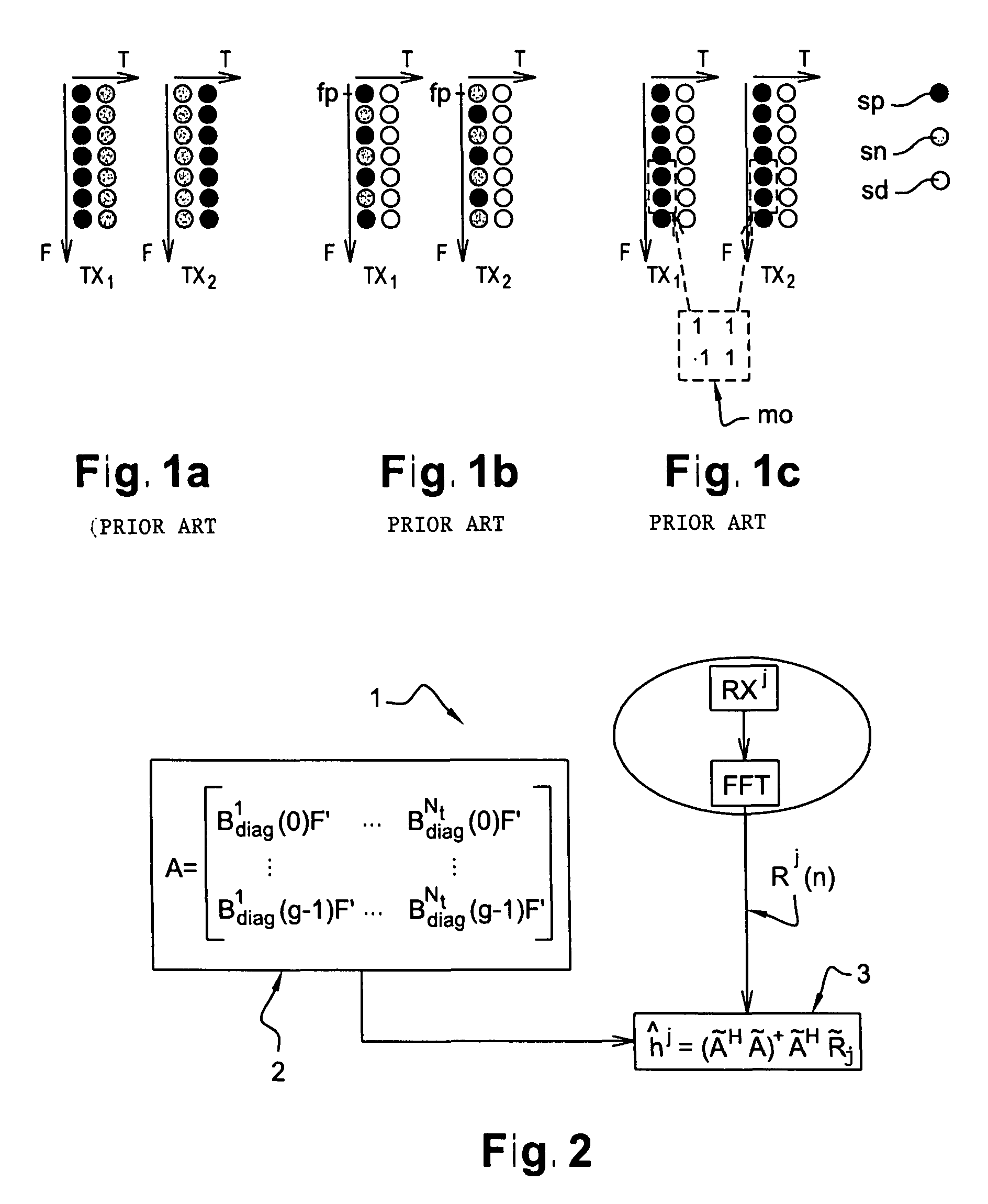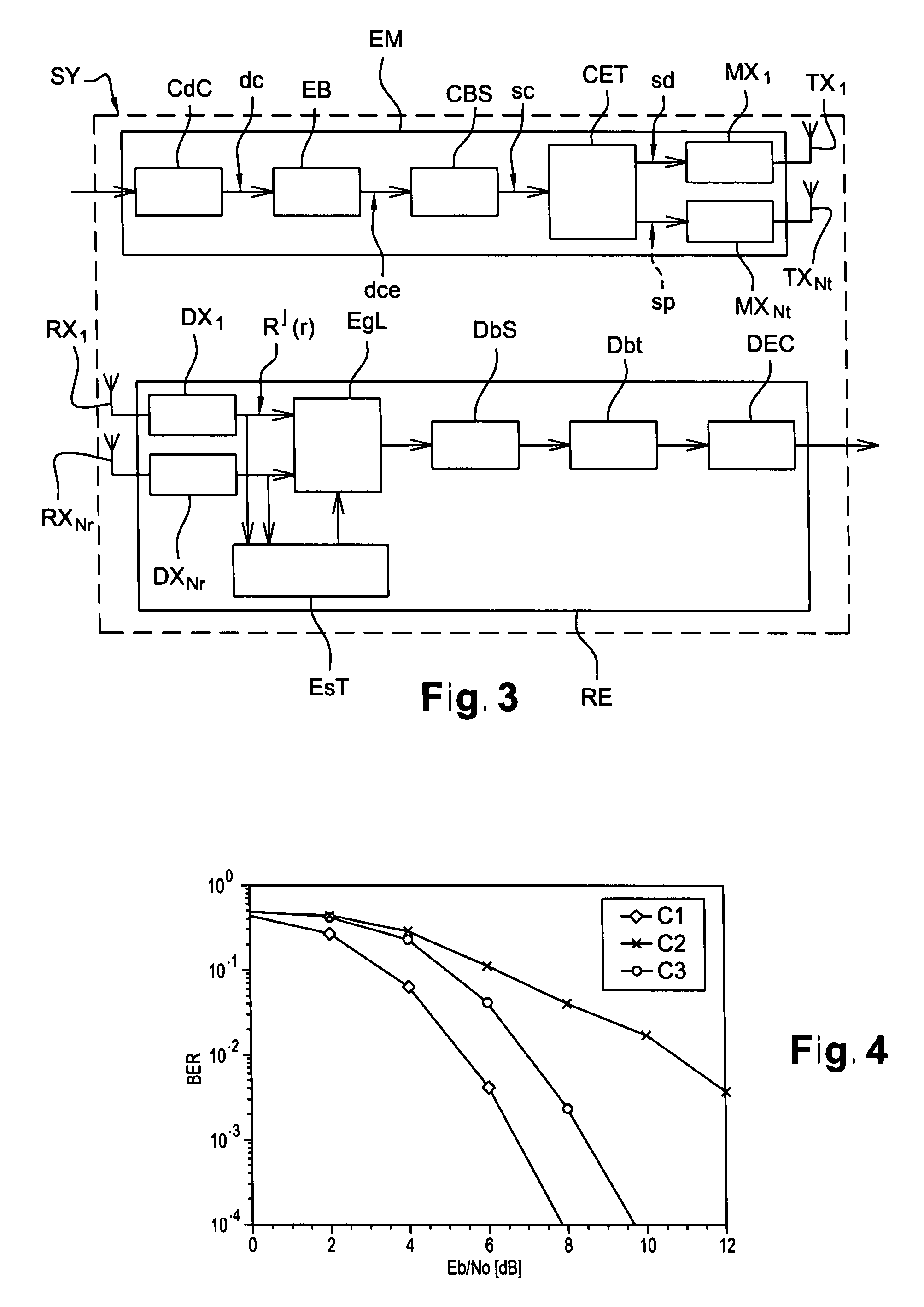Method and module for estimating transmission chanels of a multi-antenna multi-carrier system
a multi-carrier system and transmission chanel technology, applied in the field of telecommunications, can solve the problems of degrading performance by around 3 db, double the noise level, and not considering the possibility of multi-antenna system differentiation modulation as a promising option for high-bit-rate communication systems
- Summary
- Abstract
- Description
- Claims
- Application Information
AI Technical Summary
Benefits of technology
Problems solved by technology
Method used
Image
Examples
Embodiment Construction
TABLE 1Type de frame used[Teng][Moon], [Larsson], [Baek][Barhumi]Size of FFT window1024Number of OFDM32symbols in a frameModulated carriers704Payload data 75%84.4%88.6%Pilot symbols18.75% 9.4% 5.1%Other (guard, synch)6.25%Modulated data22528
APPENDIX B
TABLE 4Nt2Nr2Carrier frequency5200 MHzSampling frequency50 MHzSpace between carriers48.828125 kHzCyclic prefix ratio0.211OFDM symbol time24.8 μsLength of convolutional code7Efficiency of code½Channel decoding algorithmSOVAFFT size1024Number of OFDM symbols per frame32Modulated carriers704Null carriers320Payload data19968Pilot symbols1152Other (Synch, Guard)1408Data22528
PUM
 Login to View More
Login to View More Abstract
Description
Claims
Application Information
 Login to View More
Login to View More - R&D
- Intellectual Property
- Life Sciences
- Materials
- Tech Scout
- Unparalleled Data Quality
- Higher Quality Content
- 60% Fewer Hallucinations
Browse by: Latest US Patents, China's latest patents, Technical Efficacy Thesaurus, Application Domain, Technology Topic, Popular Technical Reports.
© 2025 PatSnap. All rights reserved.Legal|Privacy policy|Modern Slavery Act Transparency Statement|Sitemap|About US| Contact US: help@patsnap.com



